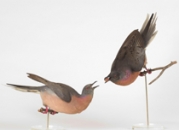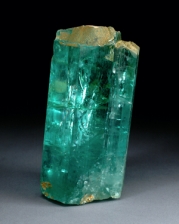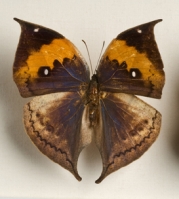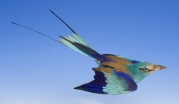ABOUT THE COLLECTION
The science collection focuses on natural history and includes minerals and fossils, bird and mammal mounts, butterflies and other invertebrates, reptiles, fish, and skeletons. It is the best collection of this type in the area between New York City and New Haven. The specimens represent worldwide localities and the collection grows through field collecting, donations, bequests, exchanges and purchases.
Recent Acquisitions





- Polished section of the Imilac meteorite
- Sulfur crystals donated by the Stamford Mineralogical Society
- Cast of Coelophysis bauri donated by Mr. and Mrs. Fred Elser
- Muskrat collected by Mike Maston
- Northern Harrier collected by Greenwich Animal Control
Minerals and Rocks
The Museum has a significant collection of approximately 1,600 mineral and rock specimens from worldwide localities.
Highlights:
- Canyon Diablo iron meteorite from Arizona and Imilac stony iron meteorite from Chile
- Minerals from classic localities such as sulfur from Sicily and lazurite from Afghanistan.
- Local mineral species and rocks including Connecticut beryl and Southbury diabase (trap rock) with zeolites.
- Gem quality specimens including a 7-inch high aquamarine crystal from Minas Gerais, Brazil.
Fossils
We have a small collection of about 500 macroscopic fossils, including the historic Havemeyer collection given to Greenwich High School in 1894 and transferred to the museum in 1932. Most of the fossils are of invertebrate species from worldwide localities, although vertebrates and plant specimens are also represented. Vertebrate specimens include artificial casts of fossils.
Highlights:
- Specimens include fossils from classic localities and Lagerstätten such as Mazon Creek, Solnhofen Limestone and the Green River Formation.
- Corythosaurus skull cast of a known specimen by a research-quality company.
- Two-foot diameter ammonites.
- Connecticut River dinosaur tracks.
Vertebrate Collection
This collection of roughly 1,000 specimens includes predominantly bird and mammal mounts along with models and mounts of reptiles, amphibians and fish. There are also some exceptional rare and extinct species. Specimens come from worldwide localities. Most mounts are full animal mounts, but there are some head mounts including the Cape buffalo and bison. There is a small collection of study skins, an important collection of bird nests and eggs, and ~76 skeletons and skeletal parts. There are also live fish in the marine tank.
Highlights:
- Extinct species including the heath hen, passenger pigeons and the Carolina parakeet
- Complete ostrich skeleton.
- Western species including the mountain lion, peccary, wolf, pronghorn antelope, Clark’s nutcracker, and piñon jay.
- World-wide specimens including the duck-billed platypus, the six-wired parotia, and the Abyssinian roller.
- Birds from the tropics of the Americas including the quetzal, the keel-billed toucan and hummingbirds collected by Paul Howes.
- Many common U.S. mammals from the white-tailed deer to moles.
- Many eastern U.S. resident and migratory birds including the gannet, pre-DDT peregrine falcons, a local wild turkey from the 1800’s, and many common songbirds and shorebirds.
Invertebrate Collection
Insects
There are roughly 3,000 specimens, most of which date from former Curator and Director Paul Howes’ field trips. [LINK Paul Howes to the Museum HISTORY section] The seasonal butterfly collection and the Trigonopsis howesi wasp nests have historical importance; one of the wasp nests was transferred to the British Museum since they believe the wasp may be extinct. The Lepidoptera collection is especially impressive with specimens from global localities.
Shells
There is an extensive collection of approximately 2,000 shells from worldwide localities. It includes a synoptic collection given to the Bruce Museum by the Smithsonian Institution in the 1920’s. There are also freshwater snail shells collected in the late 19th century.
Corals, Sponges and other marine specimens
This is a miscellaneous collection that contains some rare and endangered corals. There is also a collection of live crustaceans, gastropods, echinoderms, and bivalves in the marine tank.














